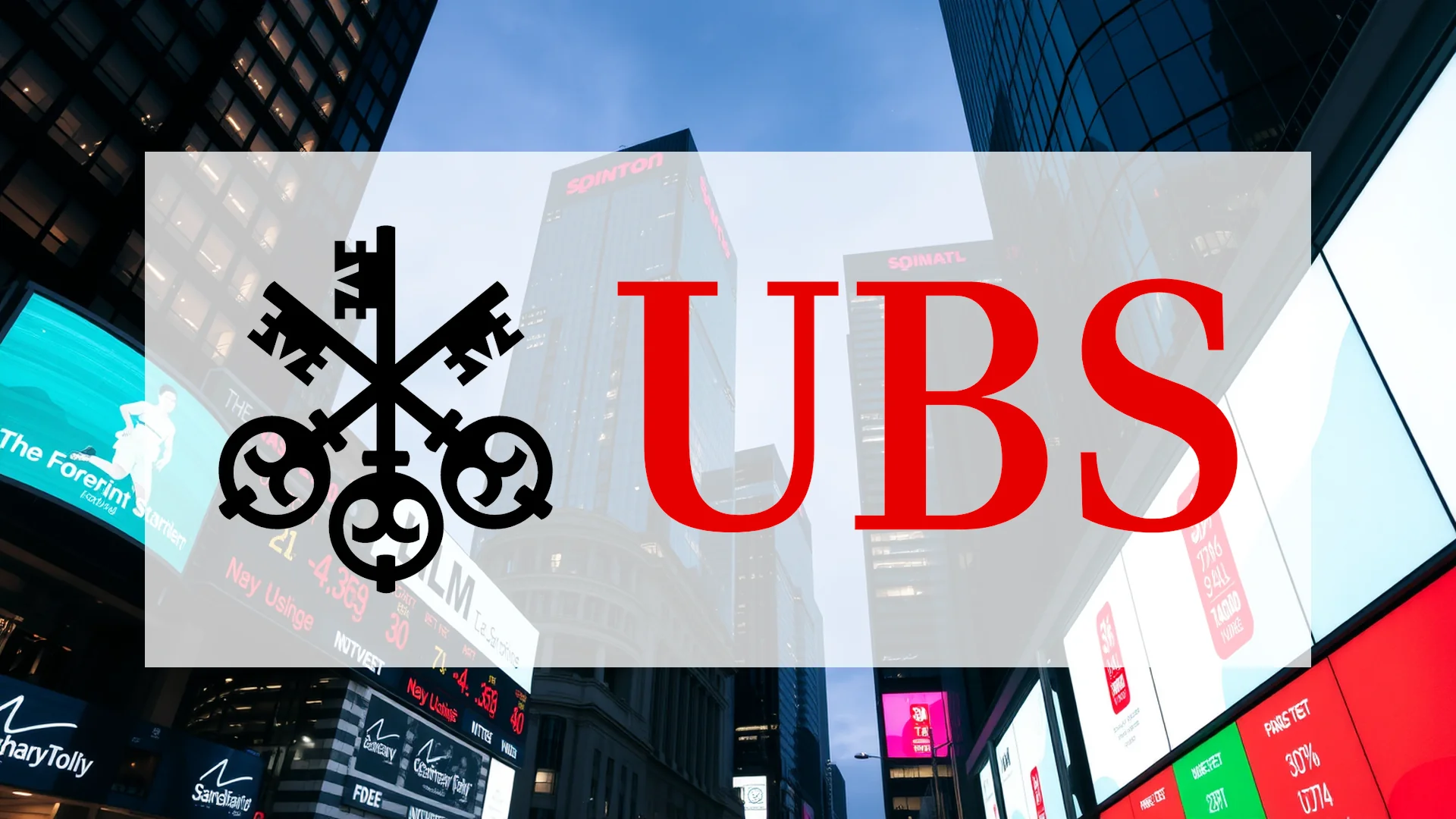Swiss banking giant UBS finds itself navigating a complex landscape. While domestic market sentiment soars on the prospect of a US trade agreement, the bank’s American operations are confronting significant challenges, forcing the liquidation of hedge fund positions valued in the hundreds of millions of dollars. The bankruptcy of an automotive parts supplier has highlighted a critical issue: legacy risks remain a sensitive subject, even after the integration of Credit Suisse. The central question for investors is whether this reputational damage could derail the bank’s current positive momentum.
Investor Euphoria Clashes with American Setback
Market optimism in Switzerland is currently reaching peak levels. In November, the UBS-CFA Investor Sentiment Index surged to 12.2 points, marking its highest level this year. This bullish outlook is largely fueled by analyst anticipation of a comprehensive trade deal being finalized between Switzerland and the United States. A substantial 40 percent of surveyed investors anticipate a powerful export boom within the next six months, a stark contrast to the struggling economic climate of the Eurozone.
However, this buoyant mood at the bank’s headquarters is starkly contrasted by growing concerns over its US-based O’Connor unit. The division is being compelled to wind down several credit funds following the collapse of automotive supplier First Brands Group. The scale of the exposure is considerable, with receivables exceeding $500 million now in jeopardy.
Specialized Lending Strategy Proves Problematic
The funds in question are specialized “Working Capital Finance” vehicles that packaged corporate loans. UBS has initiated a liquidation process in an attempt to salvage whatever value remains for its investors. Senior management has been quick to emphasize that the conglomerate itself is not directly exposed to balance sheet risks from this event. Nevertheless, the incident deals a significant blow to the reputation of the prestigious O’Connor division.
This situation raises several pressing questions for market observers:
* How effective are the risk management frameworks put in place following the acquisition of Credit Suisse?
* What other niche risks might be concealed within the newly integrated balance sheet?
* Will UBS be able to maintain the confidence of institutional investors in its asset management capabilities?
Should investors sell immediately? Or is it worth buying UBS?
The timing is particularly delicate, as the bankruptcy once again shines an unwelcome spotlight on risk management within niche markets—a persistent concern that has lingered since the mega-merger with Credit Suisse was completed.
Azelis Stake: A Deeper Look Reveals Significant Exposure
Further complexity arises from the bank’s involvement with Belgian specialty chemicals group Azelis. While superficial reports indicated an almost complete divestment, noting a direct equity holding of a mere 0.11 percent, the reality is far more intricate. UBS maintains the bulk of its economic interest through equivalent financial instruments such as swaps and stock lending arrangements.
Regulatory filings from November reveal a more complete picture: the bank’s combined exposure from both shares and derivatives previously reached approximately 4.8 percent and has since settled at around 3.9 percent. This confirms that UBS remains a relevant and significant stakeholder, even if its influence is not immediately apparent on the surface. For investors, this underscores the importance of looking beyond superficial holdings when assessing the bank’s positions.
Balancing Confidence Against Lingering Risks
UBS shares have recently demonstrated stability, trading at €32.77 (as of Wednesday), though this price sits roughly 9 percent below the stock’s 52-week peak. The robust CFA Index provides a foundation for positive price speculation, with the market currently treating the O’Connor liquidation as an isolated, albeit costly, incident.
The critical factor moving forward will be whether additional skeletons emerge from the closet or if the bank can swiftly close this chapter. UBS continues to walk a tightrope, caught between domestic market euphoria and the lingering global risks inherited from its past. Investors are likely to scrutinize every forthcoming quarterly report for any further unwelcome surprises.
Ad
UBS Stock: Buy or Sell?! New UBS Analysis from November 27 delivers the answer:
The latest UBS figures speak for themselves: Urgent action needed for UBS investors. Is it worth buying or should you sell? Find out what to do now in the current free analysis from November 27.
UBS: Buy or sell? Read more here...










